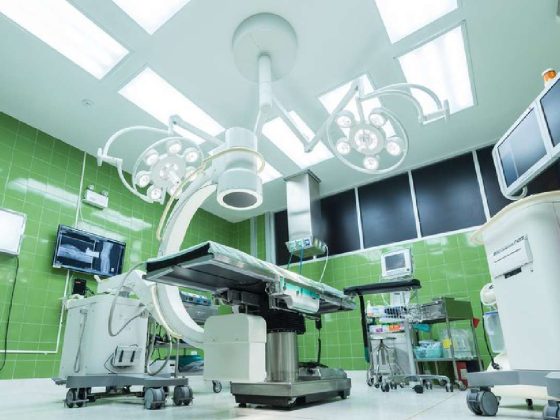How Is Breast Reconstruction Performed
If you’re considering breast reconstruction, you’re in good company. It’s a decision that many women make after their mastectomy, and it’s a procedure that not only restores the shape of your body but also the confidence that comes from feeling whole.
But if you’re not sure whether or not it’s right for you, we’ve got some information that might help.
Let’s get started!
Table of Contents
What Is Breast Reconstruction?
Breast reconstruction is the rebuilding of breast tissue and skin that has been lost due to a lumpectomy or mastectomy (breast removal). Breast reconstruction is usually done at the same time as a mastectomy (immediate reconstruction) or sometime after (delayed reconstruction).
The goal is to restore your breasts to near their original size, shape, and contour.
Who Is a Good Candidate for Breast Reconstruction?
If you’ve had a mastectomy, you may be wondering if you’re a good candidate for breast reconstruction.
You should:
- Be at least 18 years old or older.
- Be physically healthy and have a good support system in place.
- Have realistic expectations about the results of your surgery.
- Be committed to following the advice of your doctor and treatment team.
- Have completed your cancer treatment successfully and are in remission (cancer-free)
- Have enough healthy tissue to support the implant, which includes skin, muscle, fat, and blood vessels.
What Are the Types of Breast Reconstruction Surgery?
There are two main types of breast reconstruction surgery. They include:
Flap Reconstruction
Flap reconstruction involves using tissue from another part of your body to create a breast mound. The most common flap used for this procedure is an abdominal flap (DIEP flap), which uses fat, skin, and blood vessels from your abdomen to create new breast tissue.
Other Flaps Include:
- TRAM flap: This technique uses muscle, fat, skin, and blood vessels from your lower belly to reconstruct your breast.
- Latissimus dorsi (LD) flap: This procedure uses muscle and skin from your back to reconstruct your breast.
- IGAP flap: This procedure uses tissue (not muscles) from your butt area to create new breasts.
- SGAP flap: This procedure uses tissue from your butt but it uses a different group of blood vessels compared to IGAP to reconstruct your breast.
- PAP flap: This procedure uses tissue from the inner and back of your thigh to reconstruct your breast.
- TUG flap: This procedure is like the PAP flap, but it uses both muscles and tissues from your thigh to reconstruct your breast.
- SIEA flap (or SIEP flap): This technique is similar to the DIEP flap as it uses skin, fat, and blood vessels from the lower belly but its blood vessels are different.
Impant Reconstruction
This type of breast reconstruction surgery uses implants to replace the tissue that was removed during the mastectomy. This can be done in one of two ways: either as an immediate reconstruction or a delayed reconstruction,
The implant is inserted into your body through an incision in your chest wall and then shaped to match the size and shape of your original breast. Implants can be filled with saline or silicone gel.
Frequently Asked Questions
What Is Breast Reconstruction Surgery?
Breast reconstruction surgery is a procedure to rebuild the breast after mastectomy (removal of all or part of the breast). It can be performed immediately after mastectomy or any time later.
What Are the Benefits of Breast Reconstruction?
There are many benefits of breast reconstruction following mastectomy:
- Improved self-confidence and self-esteem
- Restores symmetry between the two sides of your chest
- A more natural look and feel to your breasts
- Improved quality of life
- Improves your ability to perform normal daily
What Kind of Doctor Do I Need?
You need an experienced plastic surgeon who specializes in breast reconstruction. They will work with you to determine which type of reconstruction is best for your lifestyle and needs.
What Happens During a Consultation With a Plastic Surgeon?
During your consultation, your surgeon will evaluate your health, discuss your goals and expectations, and help you decide on the best course of action. Together, you’ll develop a plan that’s customized to fit your needs.
What Are the Health Risks Associated With Breast Reconstruction?
Breast reconstruction is a safe procedure, but some potential complications could occur during or after surgery. Some possible side effects include:
How Is Breast Reconstruction Performed
- Infection
- Scarring or discoloration
- Bleeding or blood clots
- Numbness or tingling in the area of the reconstructed breast
- Loss of sensation in the nipple and areola
What Is the Best Way to Care for My New Breasts?
It is important to follow your surgeon’s instructions for your breast reconstruction. He or she will tell you how to take care of your breasts, including:
- How to clean and dress the wounds
- How often you should change bandages or gauze
- Whether you need to wear a bra or strap on your breasts
- The pain medications you should use
How Is Breast Reconstruction Performed


